Spring keeps rolling right along in the Ozarks, and I’m loving it. The coolest thing we did this week was discover a cave while hiking down the valley from our house. The Ozarks are the ancient remains of a mountain range that was formed by uplift of ancient ocean beds. This results in exposed limestone, which is eroded easily by somewhat acidic water. As water collects in cracks in the rocks, it dissolves them, and carries with it minerals (mostly calcium carbonate) and formes caves, sinkholes and springs. When the water emerges from underground passages it deposits the minerals again when the water temperature cools (water holds more minerals in warmer water and water in the ground is generally warmer) and is exposed to oxygen (CO2 off-gasses in air, raising the H2o Ph level, thus lowering its mineral load capacity). In other words, there are tons of sweet caves in the Ozarks with lots of cool stuff in them!
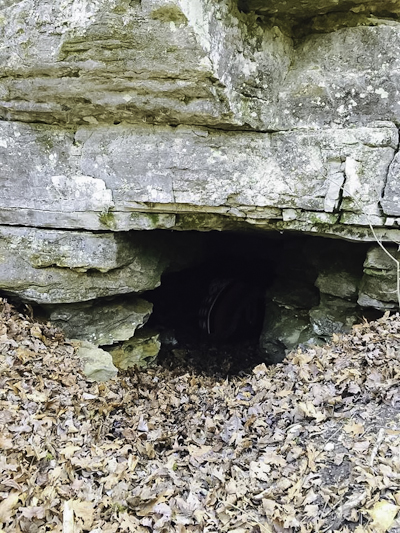
I found this small cave entrance in a rocky drainage near the Buffalo River. Photo Stella Provias
I have always been intrigued by cave ecology. Recently while guiding in Borneo, I have had the chance to explore some of the wildest most spectacular caves in the world, and my interest has piqued. Having caves to explore only a ten minute walk from my house is pretty exciting. Cave creatures have the luxury of consistant moisture and temperature conditions (perfect for amphibians), but they must abandon any need for light. Having no light in the system does pose one problem- no photosynthesis, and thus no plant life as a base for the food chain. Intead, nutrients are brought in through water, and other creatures, such as bats. Bat droppings, or guano, are extremely high in nutrients, and feed fungus and bacteria, which in turn feeds insects, ergo providing food for amphibians, bigger insects, crustaceans and fish.
SPECIAL WARNING- There is a major threat to bats in North America called the white nosed syndrome. An invasive fungus from Europe that kills more than a million bats each year. Thriving in caves and mines, this fungus grows on bats forcing them to wake up too frequently while they hibernate in the winter. Consequently, the infected bats use up their fat stores too fast and eventually starve. It is crucial to prevent spread of this menace to follow special precautions. Never enter multiple caves, as this can spread the spores between roosts. If you go in a cave, only go in one cave at a time, and thoroughly clean all of your clothing and gear after your visit. I wash all my clothes with bleach, and wipe down everything with rubbing alcohol. Click here for special protocol on how to decontaminate. Read this before you enter a cave. Click here for more info on white nose syndrome.
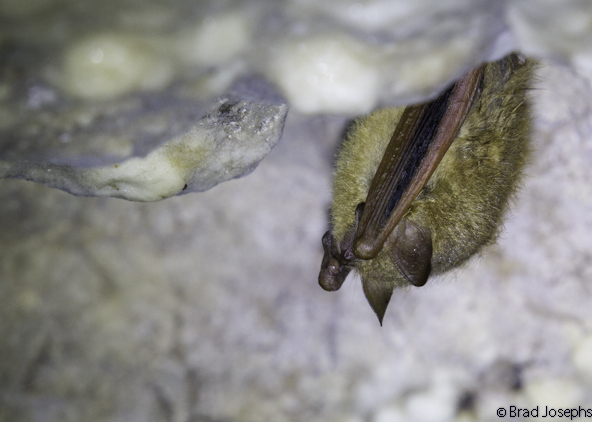
I was careful not to awaken this little brown bat (myotis lucifigus). It is the most common and widespread bat in North America. They are no longer hibernating in mid March, and are often active well before sunset.
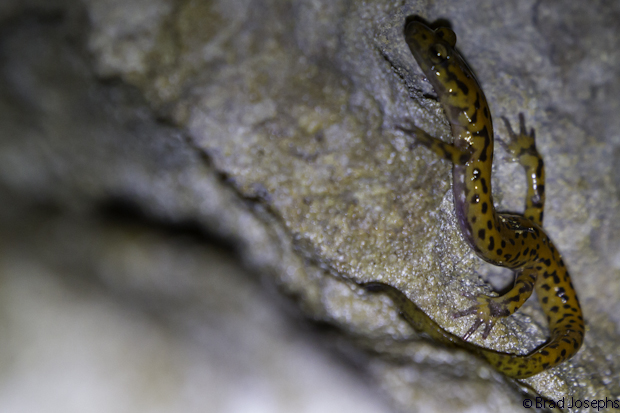
This is a beautiful cave salamander (eurycea lucifiga). They are not blind, and are usually found at the entrances of caves or wet cliffs, as well as deep in the caverns.
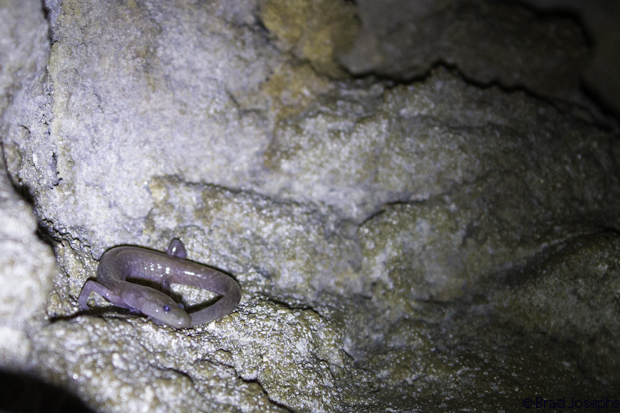
I was very excited to see my first Grotto salamander or Ozark Blind Salamander (Eurycea Spelaea). These guys start their lives as larvae in creeks near caves, enter caves after maturation, become pale, and their eyes fuse shut.
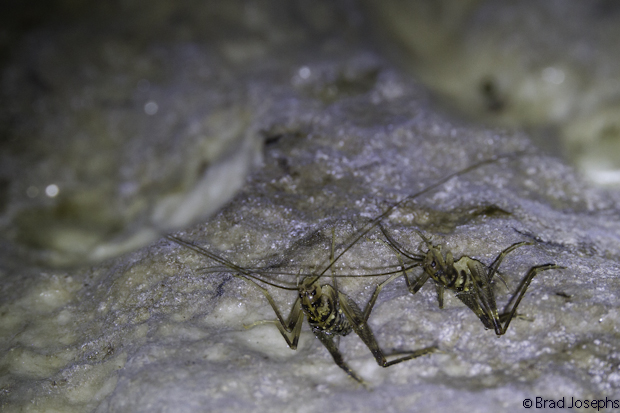
Spotted camel crickets, also known as cave crickets (Ceuthophilus spp) are very common in any humid, dark spaces.
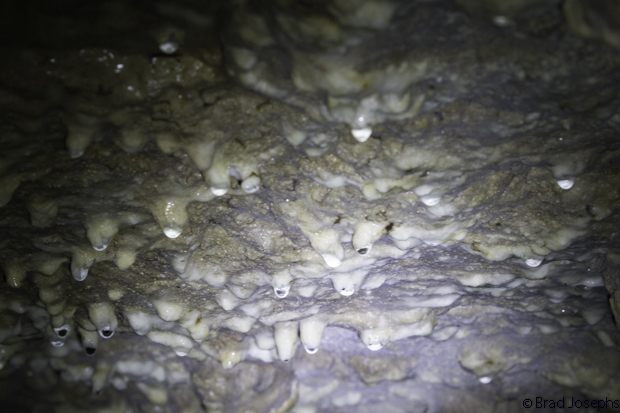
In a karst region, groundwater dissolves limestone and gathers calcium carbonate in the process. As the water leaks into the cave space, it interacts with air, and precipitates calcium carbonate, resulting in cave formations. The entire cave was encased in young stalactites. The older ones were probably broken off by past visitors.
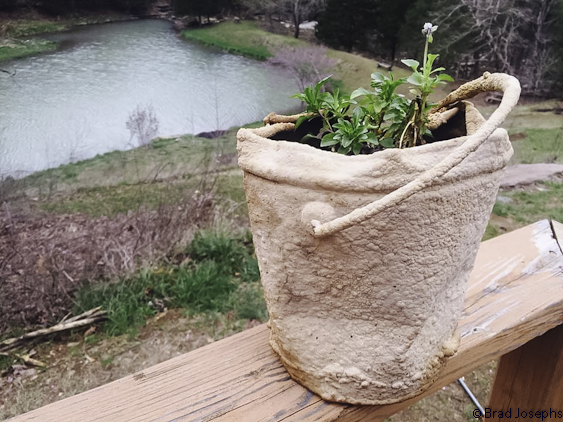
I found a very, very, very old bucket buried in the mud in the cave entirely encased in calcium carbonate. Technically it could be defined as litter, so I took it and planted flowers in it after i sprayed it with lysol for the fungus spores.
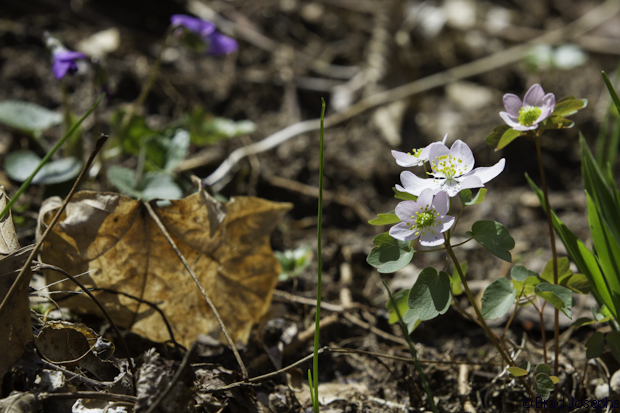
White Rue Anemone in the foreground, and wild blue phlox in the back.
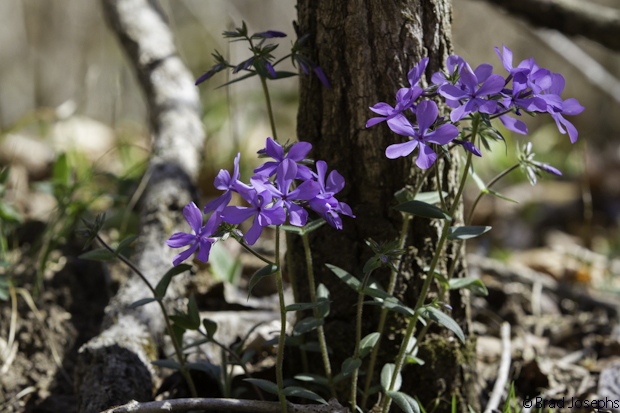
The wild blue plox is the earliest flower to appear on the forest floor in the early spring. They are like purple beacons to hungry bees and butterflies who venture out when the daytime temps rise above 60 degrees.
So far I am hearing spring peepers, a few Cajun chorus frogs, and southern leopard frogs as of March 15th. We found this tiny Blanchard’s cricket frog, barely an inch long, hopping through the leaf litter.
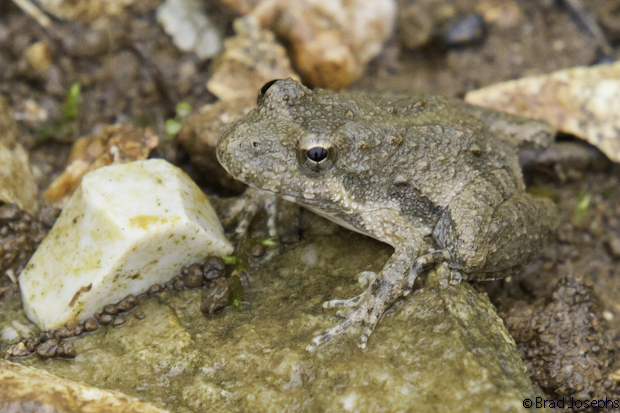
This tiny Blanchard’s cricket frog was exploring the forest floor on a warm day. They havent started calling yet, but I cant wait till they do- they sound like tinker bells. Check out their call on this site- Arkansfrogsandtoads.
Keep learning, exploring and appreciating all aspects of our natural world- even in your own backyard!

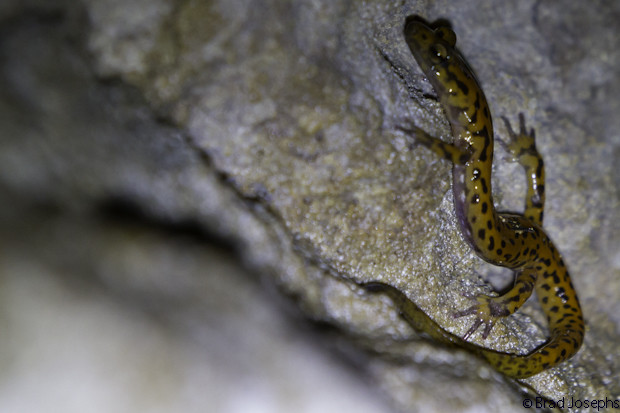


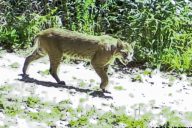
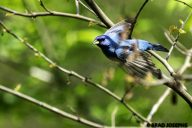
5 Comments
Awesome!!!!! Love the bucket planter!
Just an FYI about caves: White nose syndrome has just been verified along the Buffalo River and, although only partly effective, limiting human transfer of the disease is one way to slow the spread.
Also, mountain lions are very likely in Arkansas – one was killed in Bradley County in 2014. What isn’t so likely are the “black panthers” that are reported with great regularity, bar glasses tinkling in the background. Requests for photos are never followed up.
Enjoy!
Did you have a permit to visit this cave?
permission on private property.
i also just added something to the post about it- Bats of North America in peril!. SPECIAL WARNING- There is a major threat to bats in North America called the white nosed syndrome. An invasive fungus from Europe that kills more than a million bats each year. Thriving in caves and mines, this fungus grows on bats forcing them to wake up too frequently while they hibernate in the winter. Consequently, the infected bats use up their fat stores too fast and eventually starve. It is crucial to prevent spread of this menace to follow special precautions. Never enter multiple caves, as this can spread the spores between roosts. If you go in a cave, only go in one cave at a time, and thoroughly clean all of your clothing and gear after your visit. I wash all my clothes with bleach, and wipe down everything with rubbing alcohol. for more info click on – https://www.whitenosesyndrome.org/